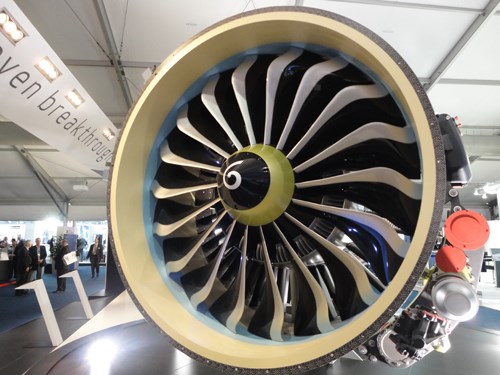LEAP backlog spurs composites production expansion
If some were unaware of the significance CFM International’s composites-intensive LEAP engine, there was no ignoring two announcements in February that signaled just how massive this commercial jet engine program is and will be.

CFM International's composites-intensive LEAP engine is being specified in big numbers for the A320neo and 737 MAX, spurring substantial composites capacity expansion.
If some people in the world of composites were unaware of the significance CFM International’s (West Chester, OH, US) composites-intensive LEAP engine, being specified for the Airbus A320neo and the Boeing 737 MAX, there was no ignoring two announcements in February that signaled just how massive this commercial jet engine program is and will be.
First, on Feb. 8, CFM reported it booked orders for 1,418 LEAP engines in 2015 (including spares). Further, the LEAP engine has now surpassed 10,000 total engine orders and commitments (excluding options) at a value of $140 billion U.S. at list price. 2016 marks the start of the transition to LEAP engine production, with more than 140 units in the plan. The company expects to complete the transition by 2020, with an annual production rate of more than 2,000 engines.
Then, on Feb. 12, Safran announced that it will build a third composites fabrication plant in conjunction with Albany Engineered Composites (Manchester, NH, US), this time in Mexico, to meet demand for composite parts on the LEAP engine. The new plant — which will make carbon fiber composite fan blades and fan case — will be built along the same lines as two existing Safran/Albany plants, in Rochester, NH, (inaugurated March 2014) and Commercy, France (inaugurated November 2014). Parts produced at the new plant are intended for the American market (on the Boeing 737 MAX, powered by LEAP engines exclusively), while the Commercy plant will primarily make parts for engines powering Airbus jetliners, mainly in Europe. Production will start by the end of 2017. Production volumes will rise sharply the following year, reaching an annual rate of more than 20,000 blades in 2021.
For details how the fan blades and cases are made, visit .
Related Content
-
Low-cost, efficient CFRP anisogrid lattice structures
CIRA uses patented parallel winding, dry fiber, silicone tooling and resin infusion to cut labor for lightweight, heavily loaded space applications.
-
The next-generation single-aisle: Implications for the composites industry
While the world continues to wait for new single-aisle program announcements from Airbus and Boeing, it’s clear composites will play a role in their fabrication. But in what ways, and what capacity?
-
Plant tour: Airbus, Illescas, Spain
Airbus’ Illescas facility, featuring highly automated composites processes for the A350 lower wing cover and one-piece Section 19 fuselage barrels, works toward production ramp-ups and next-generation aircraft.






